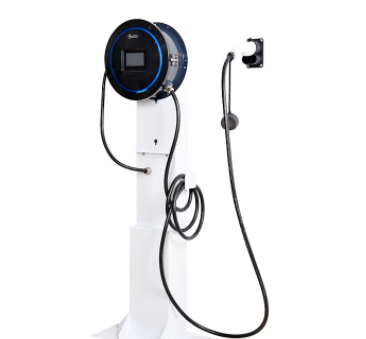The overseas electric vehicle charging station management system differs from the domestic one in multiple aspects, primarily in market environment, technical standards, user habits, regulatory policies, and cooperation models. Here is a detailed analysis of these differences:

Firstly, the diversity of the overseas market is evident. The popularity rate of electric vehicles, charging habits, and payment preferences vary greatly among different countries and regions. For example, European users may prefer to pay with credit cards, while certain Asian markets might prefer mobile payments. This variation necessitates a high level of flexibility and customization in the charging station management system to accommodate diverse market demands.
Secondly, international markets have distinct charging interface standards (such as CCS, CHAdeMO), communication protocols, and safety regulations. The charging station management system must be compatible with multiple standards and pass certifications like CE or UL. This adds complexity to the development process and increases costs. In addition, as intelligence and networked capabilities become increasingly important for future charging station systems, overseas charging station management systems need to integrate advanced Internet of Things (IoT) technologies to efficiently manage and optimize the charging network.
Thirdly, overseas users have higher expectations for the intelligence level of charging station systems, including reservation functions, real-time tracking of charging status, remote monitoring, data analysis, and predictive maintenance. Charging station management systems must take user experience into consideration when designing, providing intuitive interfaces and robust features.
Fourthly, regulations and policies differ across countries. For instance, the United States California requires a certain proportion of domestically produced materials for charging station production and mandates Energy Star certification. Successful market entry in overseas countries often relies on strong local partners, including installation service providers, maintenance teams, and collaboration with local governments. Localizing not only involves language interfaces but also adapting service models, payment systems, and user support comprehensively.
Fifthly, the cooperation model plays a crucial role in successful market expansion abroad. It depends on strong local partners, including installation service providers, maintenance teams, and collaborations with local governments. Localized offerings go beyond language interfaces, encompassing service models, payment systems, and comprehensive user support. Such a partnership model helps charging station management systems better integrate into local markets, enhance user experiences, and improve service quality.
In summary, the overseas electric vehicle charging station management system differs from the domestic one in terms of market environment, technical standards, user habits, regulatory policies, and cooperation models. These differences require companies to possess cross-cultural market insight, high flexibility and customization capacity, and a robust international cooperation network when developing overseas products.




